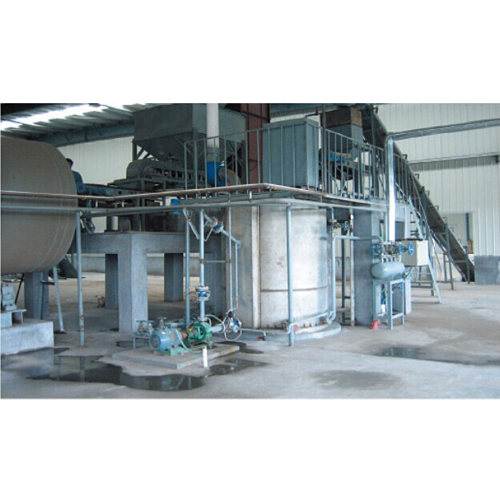- Urea Formaldehyde Compound Fertilizer Process
- Powdery Potassium Chloride Granulation Process
- Ammonification Compound Fertilizer Process
- Nitro-and Sulfur-Based Compound Fertilizer by Tower Granulation
- Biology Ferment and Organic Fertilizer Process
- Granule-Method (Steam) Compound Fertilizer Process
- New Coating Process for Controlled and Slow-Release Fertilizer
- Spray Granulation Process
- Auto BB Fertilizer Process
- New Mannheim Potassium Sulfate Process
- Nitrogen-adding Process
- Sludge Dried Process
- Ammonification Granulation
- Dry-way Extrusion Granulation
Compound Fertilizer Process
1. Urea formaldehyde Compound Fertilizer Process
2. Powdery Potassium Chloride Granulation Process
3. Ammonification Compound Fertilizer Process
4. Nitro And Sulfur-Based Compound Fertilizer By Tower Granulation Process
5. Biology Ferment and Organic Fertilizer Process
6. Granule-Method (Steam) Compound Fertilizer Process
7. New Coating Process for Controlled and Slow-Release Fertilizer
8. Spray Granulation Process
9. Auto BB Fertilizer Process
10. New Mannheim Potassium Sulfate Process
11. Nitrogen-adding Process
12. Sludge Dried Process
13.Ammonification Granulation
14. Dry-Way Extrusion Granulation
LANTYPC is a professional designer and supplier of compound fertilizer process in China. And LANTYPC has as many as 14 types of compound fertilizer processes for customers worldwide.
Categories:
1. Urea formaldehyde compound fertilizer process: The urea-formaldehyde solution from the reaction of urea and formaldehyde is sprayed into the granulator for granulation. The granulated urea-formaldehyde is used to produce urea-formaldehyde-type controlled and slow-release fertilizer, and it can extend the release cycle of compound fertilize and increasenutrient absorption rate.
2. Powdery potassium chloride granulation process: it is mainly used in producing high-content and round particle potassium chloride.
3. Ammonification compound fertilizer process: the reaction between ammonia (liquid or gas) and acid provides the heat for granulation process. It features high productivity and low production cost.
4. Nitro and sulfur-based compound fertilizer by tower granulation: this process is developed on the basis of melt pulp tower granulation compound fertilizer technology. It uses melted urea as the fluid carrier to be mixed with powdery ammonium phosphate, potassium chloride or potassium sulfate. The mixture is sent by a pump to the tower higher than 80m, and then sprayed down via spray nozzle to cool down into granules. Its product is a kind of new-type urea-based fertilizer featuring smooth surface, high intensity and good granularity.
5. Biology ferment and organic fertilizer process: this process is mainly used to produce organic fertilizer, organic-inorganic compound fertilizer by adding biological agents into livestock, municipal sludge, household garbage, straws, furfural residues, using aerobic fermentation process and adding some inorganic nutrients and microelements needed by NPK.
6. Granule-method (steam) compound fertilizer process: Powdery NPK raw materials are mixed with fillers like adhesives according to certain proportion. And then the mixture is sent to granulator to agglomerate into granules under the help of high temperature of steam and liquid phase. Then the granules are dried, cooled and screened to get the qualified compound fertilizer.
7. New coating process for controlled and slow-release fertilizer: Polymer emulsion is utilized as the 9.the coating agent for this controlled and slow-release fertilizer. And this coating process is simple and the whole coating process is environmental friendly. Meanwhile, this process is totally free from the pollution and recycle problems caused by toxic organic solvent in the coating process.
8. Spray granulation process: this process is mainly used in the granulation of ammonium phosphate, sulfuric-based NPK compound fertilizer, organic black liquids from monosodium glutamate factory and paper mill. Slurry materials with proper consistency sent to granulator for granulation.
9. Auto BB fertilizer process: Granule NPK raw materials and fillers like microelements are mixed according to certain proportion, and then the mixture is sent to the blender for further blending with the help of inclination and internal shovelling plate inside the blender. The uniformly blended materials are metered and packed in bags.
10. New Mannheim potassium sulfate process: this process uses new-type Mannheim furnace featuring good heat conduction performance to make potassium chloride and sulfuric acid fully react. In that way, its output is greatly increased, its production costs are reduced, and HCL is absorbed more completely. This process is a breakthrough for potassium sulfate production, featuring energy saving, environment friendly.
11. Nitrogen-adding process: this nitrogen-adding process is specially utilized in producing high-nitrogen compound fertilizer. Due to its high temperature, steam is sent into coiled tube to change the urea into molten urea or liquid urea. Then the molten urea or liquid urea replaces liquid water to join the granulation process, increasing not only balling rate but also nitrogen content.
12. Sludge dried process: this process is mainly used to process municipal sludge and paper mill sludge. According to the physical properties of different sludge like organic content, heavy metal content, this process can dry or ferment those sludge materials and then send them to the production line of compound fertilizer.
13. Ammonification granulation: This granulation process is a kind of low-temperature continuous production method. It can produce sulfur-based NPK compound fertilizer at a lower cost. And its products are easy to dissolve and contain no chlorine. And the products are suitable for various economic crops.
14. Dry-way extrusion granulation: This process is used in room-temperature granulation without drying. And it’s specially used in the dry extrusion of powdery materials and it can also process irregular particle materials with a diameter ranging from 2 to 6mm. Its final particle products are of high intensity and smooth surface.







